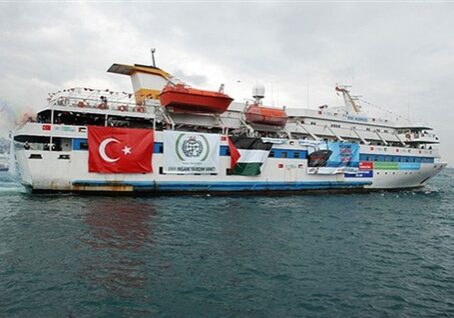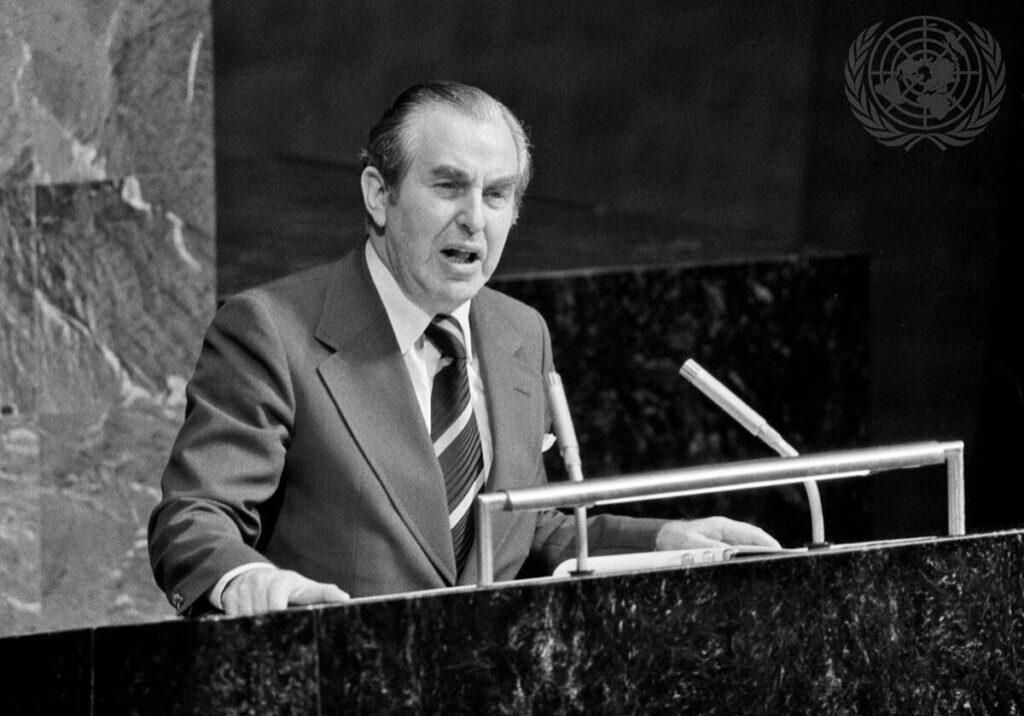Australia/Israel Review
Israel loses its last founding father
Nov 3, 2016 | Amotz Asa-El

Amotz Asa-El
Shimon Peres: 1923-2016
With his presidency of the Jewish state only 72 hours from its end, Shimon Peres arrived in the summer of 2014 at the home of Major (res.) Amotz Greenberg – a soldier who had just fallen in Gaza.
Embracing his widow, Sagit, who quietly wept into his bosom as if he had been her father, the then-91-year-old Peres turned to 12-year-old Uri, the second of the Greenbergs’ three children, and told him softly, but squarely: “You will now have to help your mother.” And summarising what he had seen so many times over the previous seven decades, Israel’s ninth president added: “Your mother will now have to be mother and father.”
Shimon Peres, the man who had dared so much to deliver peace thus ended his 66-year public career the way he launched it: at war.
Swords and shields were a fixture of his era, and beating them into ploughshares remained a dream. Yet Peres, who died in September at 93, became the acrobat who bestrode a tight-rope suspended between war and peace.
A unique character in the circle of aides that surrounded Israel’s founding father, David Ben-Gurion, Peres grew out of that exclusive club to leave an indelible imprint on Israel’s military, diplomacy and economy.
On the one hand, unlike Ben-Gurion’s future successors Levi Eshkol and Golda Meir, Peres did not arrive in the Land of Israel during the Ottoman period as an adult. – he was a 12-year-old child who came with his family during the British Mandate era.
On the other hand, unlike future military commanders like Moshe Dayan and Yitzhak Rabin, Peres was born abroad. He vividly recalled what was lost there, beginning with his grandparents who were burned alive by the Nazis in their synagogue along with the rest of the Jews of his native Vishneva – then part of Poland, now in Belarus.
The helplessness which underscored that loss could not contrast more starkly with what Peres would build.
Builder of the IDF
Lured by his grandfather and mother to read Russian, Yiddish and Hebrew literature simultaneously, the inquisitive child would go on to become one of history’s greatest military builders. Having been noticed by Ben-Gurion’s aides as a talented youth-movement leader, in 1947 the 24-year-old Peres was brought into the select circle which Ben-Gurion was gathering in order to build the IDF.
Initially assigned with purchasing a theoretical Israeli navy’s first warships, Peres was soon sent to New York to clandestinely purchase and ship home Israel’s first warplanes. The two years he spent in America were priceless for the young Peres not only in terms of his growing duties, but also in terms of his education – he used the time to study humanities at the prestigious New School, and then management at Harvard.
Returning home with the fruits of this education, the 30-year-old Peres was appointed by Ben-Gurion Director-General of the Defence Ministry, a position in which he laid the foundations for the IDF’s modernisation.
Masterminding an arms deal with France, Peres supplied the young army with its first sophisticated battle tanks and fighter jets, while creating from nothing arms and aerospace industries that eventually manufactured anything and everything, from submachine guns, mortars and tanks to radars, jets and satellites. Even his most bitter rivals in Israel admit that this industry, today the world’s seventh largest arms exporter, is, more than anyone else’s, Shimon Peres’ progeny.
The significance of this accomplishment transcends its narrow financial numbers and military impact. It both reflected and fomented a can-do mentality that refused to accept as impassable practically any political or logistical obstacle.
What Peres saw during Israel’s War of Independence, when the powers’ arms embargo was bypassed through an improbable deal with communist Czechoslovakia, taught him that even the thickest wall has weak points where it can be cracked. It was with this principle in mind that he embarked on the most spectacular of his exploits, when he enlisted France’s politically chaotic Second Republic to secretly sponsor Israel’s nuclear program.
Even in Israel only a handful of people knew this was happening, until Ben-Gurion stunned the world with an announcement that a nuclear reactor’s construction in the Negev Desert had been completed. Before and after this landmark development, Peres saw the military he helped build win the wars of 1956 and 1967, and then fend off the massive two-front surprise attack Israel faced in 1973.
That cataclysm’s abrupt dethroning of Golda Meir and her generation of leaders landed Peres in the Defence Minister’s seat. Now a statesman, he resolved to shift his vision, drive, and resourcefulness from the demands of war to the promise of peace.
The Peacemaker
The beginning was modest.
Making the most of Henry Kissinger’s shuttle diplomacy in the mid-1970s, Peres and then-Prime Minister Yitzhak Rabin struck two successive deals with Egypt, each ceding a narrow strip of the Sinai Peninsula in turn for greater disengagement commitments.
When these were followed by Egyptian President Anwar Sadat’s seminal visit to Jerusalem in 1977, Peres, by then the leader of the opposition, resolved to spread peace to the rest of Israel’s borders. It was a Sisyphean task that dominated the remainder of his life, and ultimately overshadowed his death.
Some success was achieved. The peace with Jordan that Peres began seeking as prime minister in the mid-1980s he obtained in 1994 as foreign minister in the second Rabin Government. However, peace with the Palestinians remained elusive despite the Oslo Accords he delivered in 1993, and for which he received the Nobel Peace Prize along with Yasser Arafat and Yitzhak Rabin.
The subsequent waves of terror, most notably 183 suicide bombings throughout Israel during the first decade of this millennium, disillusioned most Israelis and left them sceptical about the feasibility of the Israel-Palestinian peace which Peres preached right up until his death.
The rest of his quest, an integrated Middle East of fast trains and superhighways on which people, goods and credit would travel freely across a common market fuelled by a regional development bank and protected by a NATO-like military alliance – came to be often dismissed as a fantasy in recent years.
As Peres died, Arabs were butchering Arabs in multiple arenas on a scale not seen since the genocides of Rwanda and Cambodia. The fratricide in Syria, Yemen, Libya and Iraq that coincided with Peres’ death, made Israelis wonder how a practical man like him expected to craft a common market and forge a military alliance with generalissimos like the late Muammar Gaddafi, Hafez Assad, and Saddam Hussein.
The riddle becomes even more mindboggling when millions of Israelis recall Peres’ universally-admired transformation of the Israeli economy.
The Transformation of Israel’s Economy
When he became prime minister in 1984, Peres inherited an economy on the brink of collapse.
Inflation had exceeded 400%, and foreign currency reserves could hardly buy more than a few months’ energy imports. The public sector had ballooned to three-quarters of the GDP and public debt had reached 221% of GDP, following uncontrolled borrowing and printing of money, fanned by unrelenting union pressure on employers to index wages to inflation, a remedy that only further fanned inflation.
Followed a banking system and stock market collapse two years earlier, this was the Israeli equivalent of the Greek crisis and last decade’s Wall Street meltdown.
Peres approached the crisis in the same way he had previously approached seemingly unobtainable arms. Working from within a unity government with a finance minister from the rival Likud, Peres secretly assembled a team of economists and ultimately hammered out with them a battle plan.
He then called an emergency cabinet session one day in July 1985 which he refused to adjourn and which thus lasted into the following morning. Ministers protested that they were falling asleep, but Peres, 62 by then, said they would not be permitted to leave until his plan was approved. The following day, it became clear that the Israeli economy was headed onto the operating table for radical surgery.
Overnight, Peres had forced the military to cut its budget by a fifth; he slashed nearly all government subsidies of food and transportation prices, thus raising prices but also further cutting spending; he froze all public-sector hiring and salary raises; he abolished the indexation deals that adjusted salaries to inflation; he legislated a ban on printing money to finance deficits; he slashed import duties; and he shifted responsibility for monetary policy from the Finance Ministry to the non-political Bank of Israel.
The results were spectacular.
Inflation dropped to less than 20% and the following decade became one of the lowest in the world; the shekel began marching along the path that would make it one of the world’s strongest currencies; the budget deficit began shrinking until becoming one of the world’s lowest, as did the debt-to-GDP ratio; the trade deficit began narrowing, eventually turning into a surplus; unemployment, which initially rose due to the plan’s short-term effects, soon began declining and now, at 4.6%, is one of the world’s lowest. Most importantly, Israel ultimately attracted foreign investment at a rate among the world’s highest.
At the same time, Peres, the Labor leader who used to read Marx by moonlight to his future wife Sonia, sparked Israel’s privatisation revolution. He had the unions fire a third of the employees of their near-bankrupt industrial conglomerate Koor, then Israel’s largest employer, and spin off many of its holdings. The company did all this, climbed out of debt, sold shares on the Tel Aviv Stock Exchange, and eventually was bought by foreign investors.
The journey from socialism to capitalism was further underpinned by Peres’ cancellation of a multi-million-dollar project to build an Israeli fighter jet, a decision that meant firing thousands of engineers.
Fears that their dismissals would touch off a brain drain were soon dispelled, as rather than leave Israel they either found new jobs in the rehabilitated economy, or combined to build the start-ups that would soon symbolise Israeli society’s new infatuation with enterprise. By the turn of the century, such privately-driven technology companies were the locomotive of Israel’s export-driven economy.
Even more tellingly, dozens of Israeli firms began selling shares on foreign markets and they soon became the second most commonly traded foreign stocks on Wall Street, after Canada’s.
This capitalistic drive of course had its drawbacks, and Peres was the first to decry them, deriding what he called “piggish capitalism,” by which he referred in 2003 to the global decline in social compassion, a grievance that would become widespread in 2008 following the meltdown in Wall Street.
Still, Israel’s swift transition from socialism to capitalism was a smashing success story that would not have happened without Peres’ leadership.
Indeed, had anyone said in 1984 that Israel would soon own one of the world’s strongest currencies, lowest debts and most steadily growing economies, and that its companies’ shares would be selling worldwide and become the toast of the leading financial markets – they would have been dismissed as a wishful thinker.
Encouragingly, the man who saw all this ahead of anyone else is the same man who said that the day will come when the Middle East’s many belligerents will lay down their swords and shields and turn them into ploughshares. His name was Shimon Peres.
Tags: Israel






